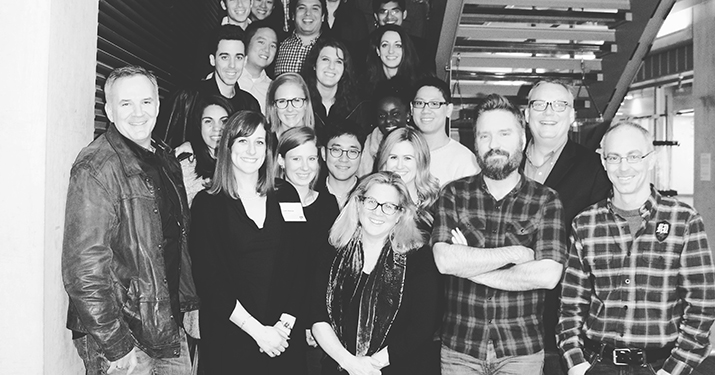“Research Design Build” Course Inspires MMM Alumnus and Current Students

It’s not every day that a first-year graduate student has the opportunity to demonstrate their skills to the CEO of an iconic American brand, but that’s exactly what the MMM students taking “Research Design Build” (RDB) did for their final presentations earlier this month.
For eight weeks, teams of students in “Research Design Build” worked to solve a challenge posed to them by Harley-Davidson. During their final presentations, the CEO of Harley-Davidson and MMM alumnus, Matt Levatich, was sitting in the front row.
The MMM Program is a dual-degree program in which students simultaneously pursue an MBA from the Kellogg School of Management and an MS in Design Innovation from Northwestern Engineering.
“Research Design Build” is a hands-on studio class with a strong focus on innovation based on user needs. Co-taught by Professors Greg Holderfield and Martha Cotton, the class provides MMM students with the opportunity to solve complex challenges for real clients.
The MMM program was what drew Levatich to Northwestern.
“I came here specifically for the MMM program,” Levatich explained. “It was the best version at the time of an integrated engineering management program. It positioned me well for a long and productive career at Harley-Davidson, which is a company I absolutely still love to this day.”
The MMM program has evolved over time to focus on design thinking more so than engineering management, and Levatich sees a direct connection between that evolution and the approach that companies like his own are taking today.
“Personally, I think that the design thinking that is being pioneered here at Northwestern lends itself to really good business thinking. The world is fundamentally about solving problems and design thinking is about doing that really well,” Levatich explained.
Levatich said that the MMM program produced graduates with an impressive command of intellect and dexterity to engage with big questions.
“The utility and versatility of the MMM program makes it really useful for Harley-Davidson,” he added. Students in the MMM program also appreciate the strong ties that the program maintains with its alumni.
Milan Raj, a current MMM student, explained. “The MMM program has a rich history that allows our students and faculty the ability to tap into such an incredible pool of alumni who are leading corporations all over the world.”
Raj added, “Matt Levatich, CEO of Harley-Davidson and MMM alum, is a shining example of one such alumni who was willing to dedicate resources and time necessary to continue enriching the program by serving as the partner client for our RDB engagement.”
Part of the coursework in “Research Design Build” prepares students to approach problem solving with a design thinking mindset, including user observation and in-field ethnography. Rob Celin, a MMM student in “Research Design Build” added his perspective.
“This was my first time doing ethnographic research and it was fascinating to see how these communities have so many complex layers to them that drive their members to behave in certain ways,” Celin said. “It was an amazing experience to tackle an ambiguous, open-ended, real-world challenge and work through the abstraction process to design solutions for Harley-Davidson. I learned a ton through this class and it really pushed me to think and create in new ways.”
The lessons that MMM students learned in “Research Design Build” extend far beyond the classroom. Zach Schmidt, a student in the “Research Design Build” class, said the MMM program has given him a competitive edge.
“It has given me the tools to repeatedly differentiate myself from other candidates in case competitions and interviews,” Schmidt said.
Levatich encouraged the MMM students to remember the design thinking mindset as they moved forward in their work.
“As you go forward and you think about the impact you want to make in whatever career you pursue, don’t forget what you’re learning here. It will help you solve all kinds of problems. Life is just loaded with problems to be solved and when you’re good at it, you’re going to have a great life,” said Levatich.
Professor Holderfield agreed, telling the students that “the content, the chaos, and the mess that’s been created in RDB was inspiring. We want this to be a mindset for you to activate how to solve problems, how to think differently, how to seize the moment and carry it forward.”
